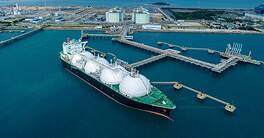Lenders across Europe are ramping up M&A efforts to scale operations, strengthen balance sheets, and navigate an evolving financial landscape.
The European banking sector is experiencing a wave of consolidation as institutions seek to bolster their market position, expand their asset base, and improve returns. With interest rates stabilizing and capital reserves at healthy levels, banks are taking advantage of strategic acquisitions to fuel growth and enhance profitability.
UBS completed its landmark acquisition of Credit Suisse in July, marking one of the most significant deals in the sector. In the UK, Nationwide finalized its purchase of Virgin Money, while in December, Italy’s UniCredit increased its stake to 28% of Commerzbank, Germany’s second-largest lender. Dutch lender ING has also signaled its intent to acquire rival banks in major European markets.
Higher interest rates and improved capital buffers have strengthened European banks’ ability to pursue acquisitions. As rates begin to ease, M&A activity could gain further momentum, with banks looking to scale up and boost profitability in an increasingly competitive environment.
“There are a number of possible explanations for the run of European banking deals,” says Russ Mould, investment director at AJ Bell. “They include a drive for further consolidation to boost margins and returns on equity—especially within the EU, where the banking system remains highly fragmented. Strong balance sheets that easily meet regulatory requirements allow room for M&As, even after the distribution of increasingly generous dividends and buyback programs.”
Ultimately the key issue is valuation. The price, or valuation, paid for an asset is the definitive arbiter of investment return and the buyers clearly feel they were able to pay prices that gave them downside protection, and yet leave them with upside potential.
Despite the surge in M&A activity in the European banking sector, challenging the largest banks in the US and China may take some time, as they outpace European competitors in domestic activity, cross-border lending and digitalization.
According to S&P Global Market Intelligence, in 2024, the bank with the most assets in the world was the Industrial and Commercial Bank of China, totaling $6.3 trillion. It was followed by the Agricultural Bank of China, which has amassed $5.6 trillion, and the China Construction Bank Corp. with $5.4 trillion. JPMorgan Chase was the biggest US-based bank with $3.9 trillion in assets. In comparison, the largest European bank was the UK-based HSBC Holdings with $3 trillion.




